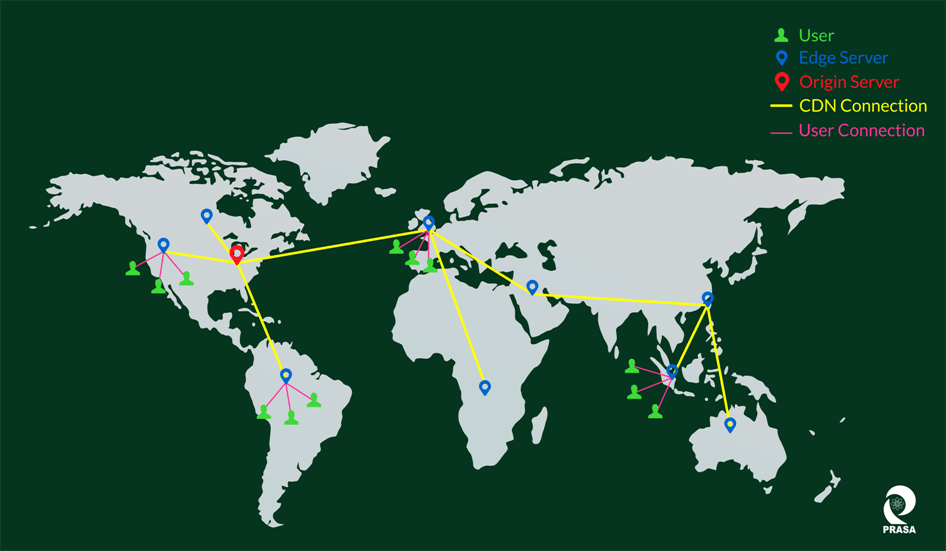How Content Delivery Networks Address Cloud Security Issues?

The desire for connectivity anytime and anywhere has led to widespread adoption of cloud services. The downside of this is that we are seeing continuous growth in application-layer attacks, fraud exposure, and nefarious elements targeting end users. Security was easy earlier with the entire infrastructure on site, standard procedures (firewalls, intrusion prevention systems, intrusion detection systems, antivirus, etc) worked well, but with the widespread adoption of cloud, these approaches are just not sufficient.
The silver lining is that IT departments may already have the tools and platforms needed to mitigate cyber attacks. A Content Delivery Network (CDN), which is usually associated with improving web performance, can also prove to be instrumental in keeping the company’s data safe. CDNs analyze and absorb unusual traffic hikes, act suitable on it and protect the data and website of the company.
The number of connected devices will rise to almost 50 billion by 2020 (up from 8.7 billion in 2012) which will generate a monumental amount of data. All these connected devices like printers, Wi-fi camera, smart appliances, smart devices, etc, will be more exposed and prone to cyber attacks and security threats. With more and more devices connected, we will be seeing more frequent attacks.
Keeping data safe with CDN
The loopholes in cloud security can be overcome with the adoption of CDN. It transports the data between consumers and edge. Data is the most vulnerable during transit, so reducing the back and forth transfer of data and a protection system at the edge of the network makes data safe. By deploying protection for these links and pipelines that carry data between the multiple machines, security concerns for cloud computing can be overcome.
The purpose of CDN adoption is to speed up application delivery for better user experience by bringing IT- related services closer to the end user. Now, CDN is also making its place as a core security provider, protecting the traffic running across its network. These services usually include DDoS (Distributed Denial of Service Protection), WAF (Web Application Firewall), bot protection and TLS (Transport layer security) encryption. CDNs take care of critical security functions along with offering proximity to the user and scalable infrastructure at the network edge. CDN also provides an option to add servers for a particular service, as and when its need increases. Such an option is not available for cloud-type hyperscale.
CDN is expected to grow rapidly in the coming years, due to the increase in the volume of data consumption. According to a recent study by Markets and Markets CDN is expected to grow with a CAGR of 32.8% from 2017 to 2022, growing from USD 7.47 billion in 2017 to USD 30.89 billion in 2022.
How CDN security works
To ensure security we need to control the things that, we do not want to come in. The edge data centers, data centers, and cloud are protected with firewalls and different other tools that stop any mal-practices. On the receiving side are the consumers and smart devices. The major susceptibility lies in the transport channels. Therefore, the security approach with CDN has proven itself to be more efficient, by blocking out malicious traffic during the transit and keeping data secure, even in the short distance between customers and edge data centers.

Protection services at CDN function using Machine Learning and Artificial Intelligence, making these services smarter and more secure each time a threat is detected.
The cloud is expanding rapidly as more and more devices come online every day. These modern connected devices produce and transmit a massive amount of data. These devices also are an integral part of our lives- professional and personal. The changes and growth of these devices entail lightening fast speeds and colossal data consumption which cannot be efficiently scaled for security by the cloud. The need for a faster and safer internet has popularized the CDN as new “must-have” for all organizations.
References
https://priceonomics.com/the-iot-data-explosion-how-big-is-the-iot-data/
https://www.marketsandmarkets.com/PressReleases/cdn.asp
https://blog.stackpath.com/the-evolution-of-cdn-and-cloud-security









Leave a Reply